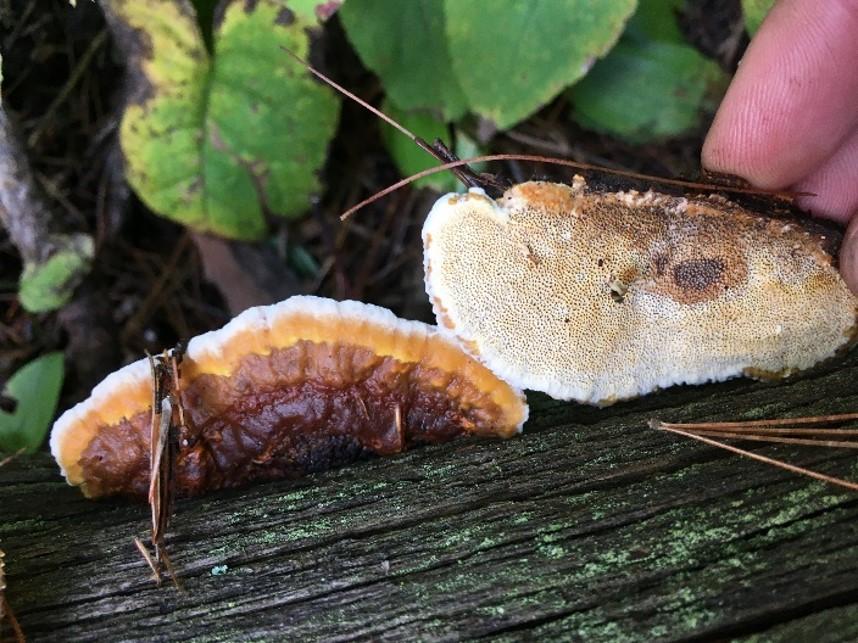Functional and Systems Biology
Environmental Transformations and Interactions
Understanding Gene Regulation in Brown Rot Fungi, a Key Decomposer
Scientists offer new insights on central role of gene regulation in the efficacy of a common decomposer fungus crucial in the carbon cycle.

The Science
In the carbon cycle, there are many different reservoirs—or sinks—where carbon is stored, including rocks, soils, the atmosphere, and oceans. Carbon is constantly in flux between these sinks, and decomposing organic matter (such as plants and organisms) plays an important role. Brown rot fungi are common decomposers, but exactly how gene regulation affects their activity and efficiency is not well understood. Here, researchers investigated the mechanisms of gene expression control in brown rot fungi through the characterization of RNA transcripts and enzyme analyses.
The Impact
Carbon and the carbon cycle are essential for life on Earth. Brown rot fungi play a central role by breaking down organic matter, particularly in northern forests such as the Boreal Biome, Earth's largest biome. Despite their importance, an understanding of how these common fungi respond to different carbon sources and how gene expression affects their efficiency has been lacking. These findings fill a significant knowledge gap related to these influential decomposers, improving knowledge of the genetic mechanisms involved in the degradation of wood by brown rot fungi and of their potential for use in bioenergy applications.
Summary
Brown rot fungi are common decomposers of wood that are dominant in higher-latitude forests. They have specialized genetic mechanisms to break down cellulose and quickly produce carbohydrates for fungal catabolism. Although evidence suggests that gene regulation is critical to the efficacy of brown rot, its mechanisms are not well understood. In this study, a multi-institutional team of scientists used transcriptomic and enzyme analyses to investigate carbon catabolites and determine how they control gene expression in Rhodonia placenta, a model brown rot fungus.
The team determined that depending on the carbon source, which included no-carbon controls, glucose, cellobiose, and aspen wood, gene expression differed. They also obtained evidence that the fungus might have adapted divergent regulatory routes to enhance cellulase production. These routes enabled the fungus to quickly release carbohydrates for fungal catabolism. Finally, the team was able to compile these specialized regulatory mechanisms of brown rot fungi into a network model. Overall, this work suggests that these fungi have evolved special machinery to control gene expression during wood rot, which opens a new avenue to understand how decomposer fungi degrade and recycle carbon sources from plant matter.
A portion of this work was performed at the Environmental Molecular Sciences Laboratory (EMSL), a Department of Energy Office of Science user facility.
Contacts
Jiwei Zhang, University of Minnesota, zhan3437@umn.edu
Johnathan Schilling, University of Minnesota, schillin@umn.edu
Hugh Mitchell, Environmental Molecular Sciences Laboratory, hugh.mitchell@pnnl.gov
Funding
This work was supported by the DOE, Office of Science, Biological and Environmental Research program, and startup funds from the University of Minnesota. A portion of the research was performed using capabilities available through the Environmental Molecular Sciences Laboratory, a DOE Office of Science user facility located at Pacific Northwest National Laboratory.
Publication
J. Zhang, et al. "Distinctive carbon repression effects in the carbohydrate-selective wood decay fungus Rhodonia placenta." Fungal Genetics and Biology 159, 103673 (2022). [DOI: 10.1016/j.fgb.2022.103673]

